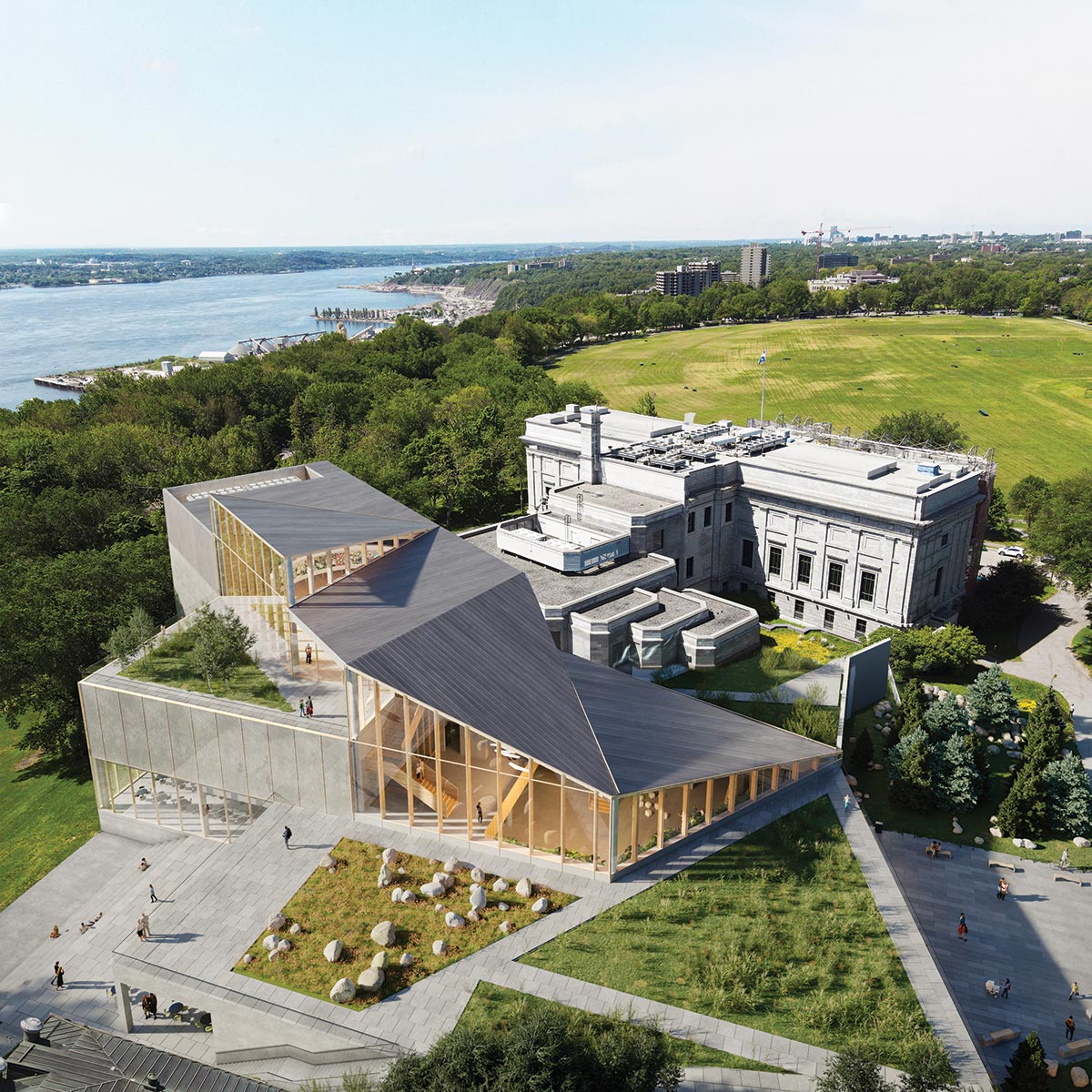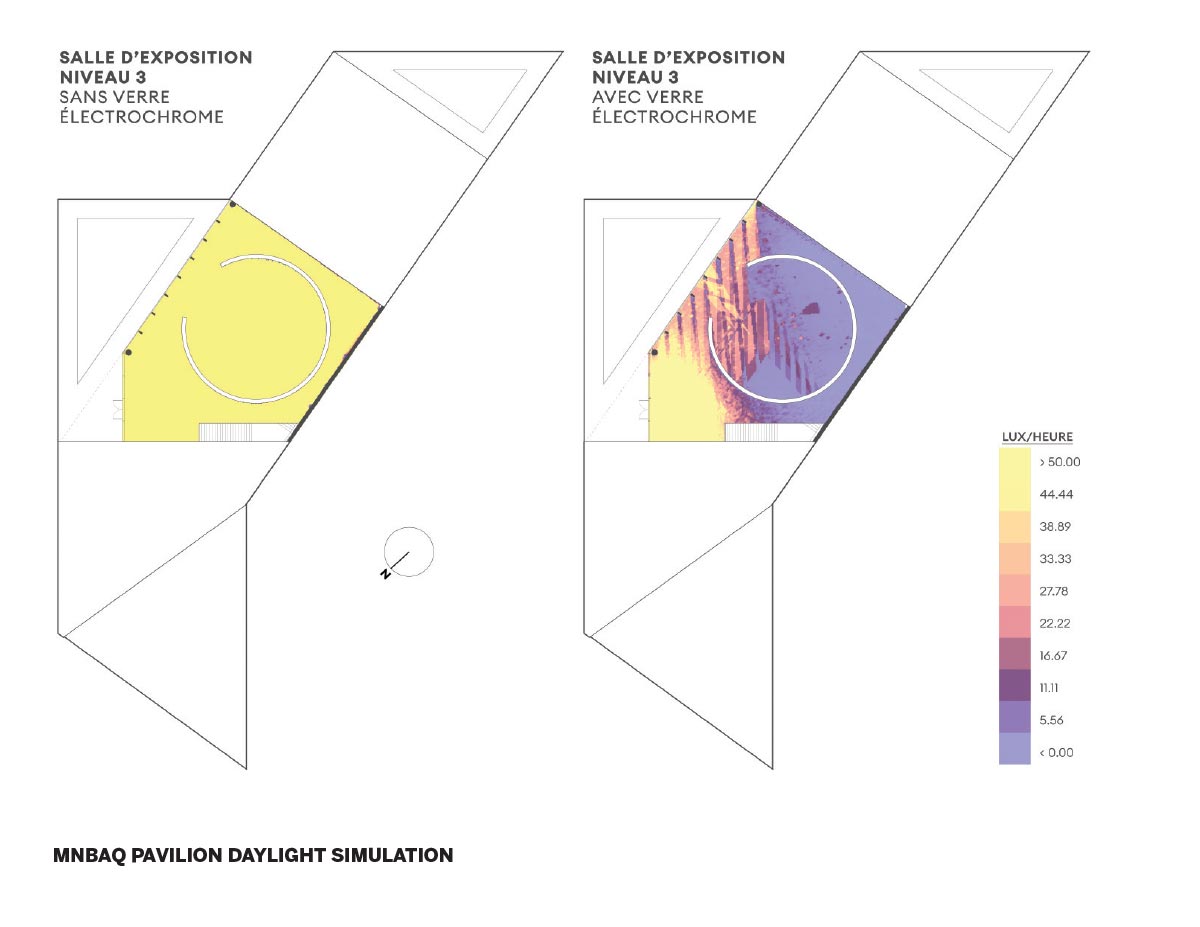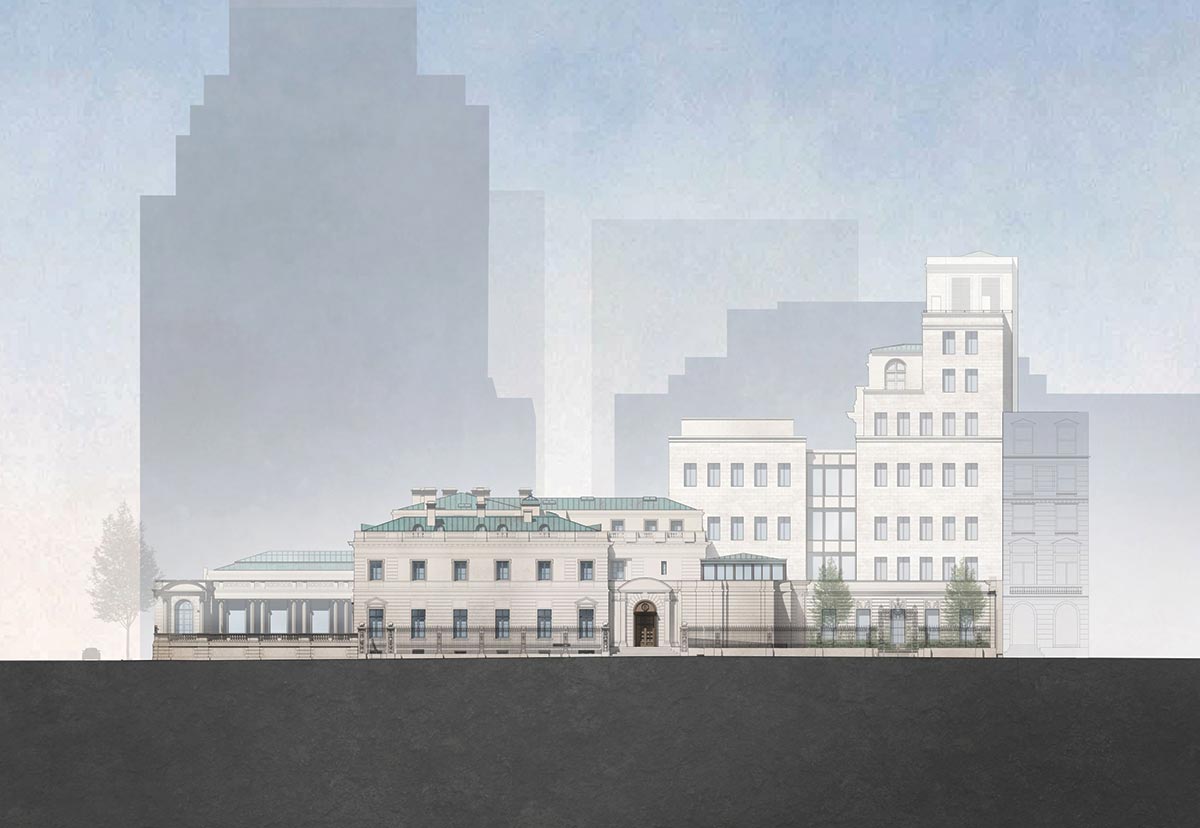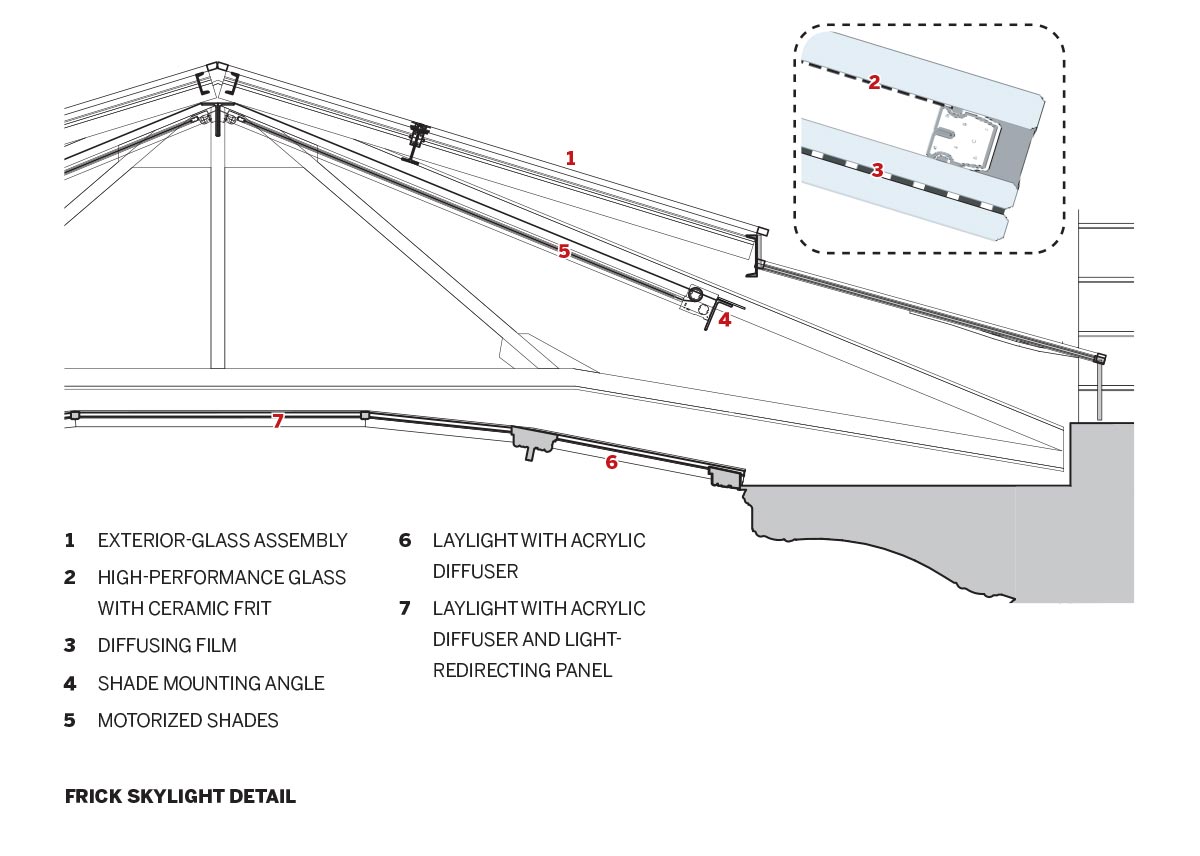Daylighting in Museums
The visitor’s procession through the galleries of the pavilion (which, on the lower floors of the three-level building, are electrically lit, with daylit circulation spaces and specially lit transition zones to help the eyes adjust between the two) culminates in a fully glazed rooftop volume, with expansive views over the St. Lawrence River. It was while living on an island in the St. Lawrence that Riopelle created Tribute, a colorful triptych more than 130 feet long, in response to learning of the death of his former companion of many years, the American painter Joan Mitchell. Exhibiting this work in the light and landscape in which it was created, and adjacent to a terrace that allows the visitor to step out into that setting, “I think will provide a quality of experience that evokes emotion in the visitor and becomes something that they remember,” says Gauthier.
From a conservation perspective, however, daylighting the piece, which was executed in spray paint on paper, is a challenge. Based on studies of the pigments and the fragility of the paper, at no time is illumination permitted to exceed 75 lux (a measure of how much light falls on a particular surface; in the U.S. this is measured in foot-candles). A limit on exposure to ultraviolet (UV) light in particular, with its greater potential for damage, is also strictly defined.
The painting’s three segments will be mounted on the inner faces of 10-foot-high partition walls that form a circular enclosure within the glazed volume. Stopping short of the ceiling, the partitions allow for what’s essentially a 4-foot-high, 360-degree clerestory. In order to avoid admitting direct sunlight, computer modeling helped to define the height of this enclosure and to locate the openings into it, and the architect will work closely with the exhibition designer to ensure that the completed partitions comply with the daylight simulation.

IMAGES: COURTESY FABG
FABG’S initial scheme for a pavilion in Quebec dedicated to the work of Jean-Paul Riopelle was premised on the use of electrochromic glazing.

FABG’s competition-winning entry was premised on the use of electrochromic glass (which changes its optical properties in response to an electrical charge). However, as more complete information about the sensitivity of the art emerged, the client grew concerned about the possibility of power failures. With climate change, these have been growing longer and more frequent. The design has now been revised to incorporate a more passive solution, to be revealed in the new year. It will include deep overhangs of the timber roof—14 feet on the southeast side, and 22 feet on the southwest—so that this well-loved painting can be safely exhibited in its home light.
Both the Museum of Modern Art Warsaw and L’Espace Riopelle work deliberately with local conditions of daylight and place to create a memorable experience of art. For the renovation and expansion of the Frick Collection, a New York museum known for its outstanding examples of Western painting, sculpture, and decorative arts, the primary local condition is the Frick itself. The Selldorf-designed interventions, encompassing some 60,000 square feet of existing space and 18,000 square feet of new construction, are the first comprehensive upgrade to the Frick’s buildings since the institution opened to the public more than 80 years ago. From the perspective of daylighting, the goal is for the museum to retain the spirit and experience of the original, but to perform far better in terms of visual comfort and the curatorial needs of the art. “If you were to ask the average museum viewer,” says Ubbelohde, “we hope they will just say it feels fresh and beautiful.”
Housed in the early 20th-century mansion of the collection’s founder, Henry Clay Frick, the museum’s galleries were daylit with an assembly that was typical of the time. A large, hipped skylight runs the length of the galleries; within each gallery, a ceiling of glass panels, or laylights, transmits diffuse light; and in the interstitial attic space, adjustable louvres or blinds provide sun control. It’s a practical assembly, modulating the light, providing layers of defense against leaks, and allowing the ceiling to look pretty and serene, while a separate structure supports the skylights’ weather envelope. The performance of these elements, however, was limited by the material technologies of the era—wired skylight glass and linen blinds, for example—and each of those layers at the Frick had become compromised over time.

IMAGE: COURTESY SELLDORF ARCHITECTS
As part of the Selldorf-led renovation and expansion of the Frick in New York, Loisos + Ubbelohde has redesigned skylights to meet new thermal and visual criteria.
 IMAGE: COURTESY LOISOS + UBBELOHDE
IMAGE: COURTESY LOISOS + UBBELOHDE
Working with an existing museum allows the daylighting designer to use measured site conditions to calibrate a digital simulation model. “We can then use that model with real assurance that it can tell us how changes in the glazing and other materials are going to perform,” says Ubbelohde. In collaboration with a team from Arup, Loisos + Ubbelohde identified exterior skylight options that could meet both thermal and visual criteria, and tested them in simulations with options for laylight materials and shading strategies. The design team then had a physical model built to allow project-team members to experience the most promising combinations. “You could sense the difference between the various glazing specifications in ways that could not show up in the simulations,” says George Loisos, founding partner at the firm.
The museum’s daylight and electric light are designed, in collaboration with lighting-design firm L’Observatoire International, to work as an integrated system. The daylight provides ambient illumination, with more light in the center of the room and less reaching the walls. Supplementing the lower daylight levels on the art, carefully calibrated electric light is used to highlight, say, a dark Rembrandt without exceeding curatorial standards; making the art a little brighter than the wall on which it’s hanging attracts the visitor’s eye and makes the painting easier to enjoy. Because the artworks vary in their surface characteristics—some are flat, others have a specular component and, depending on how the varnish has aged, may even have become more reflective—luminaires integrate diffusers as needed.
When visitors return next year to their “refreshed” museum, “they won’t notice the technical subtleties that make the museum experience so much better,” says Ubbelohde, “but that’s the point.” In a comment that sums up something the daylighting designs for the Museum of Modern Art Warsaw and L’Espace Riopelle also have in common, she says, “The point is for visitors to say, ‘Wow, this is fantastic!’ without necessarily knowing why.”
Supplemental Materials:
“The History of Museum Daylighting”, Buro Happold.



